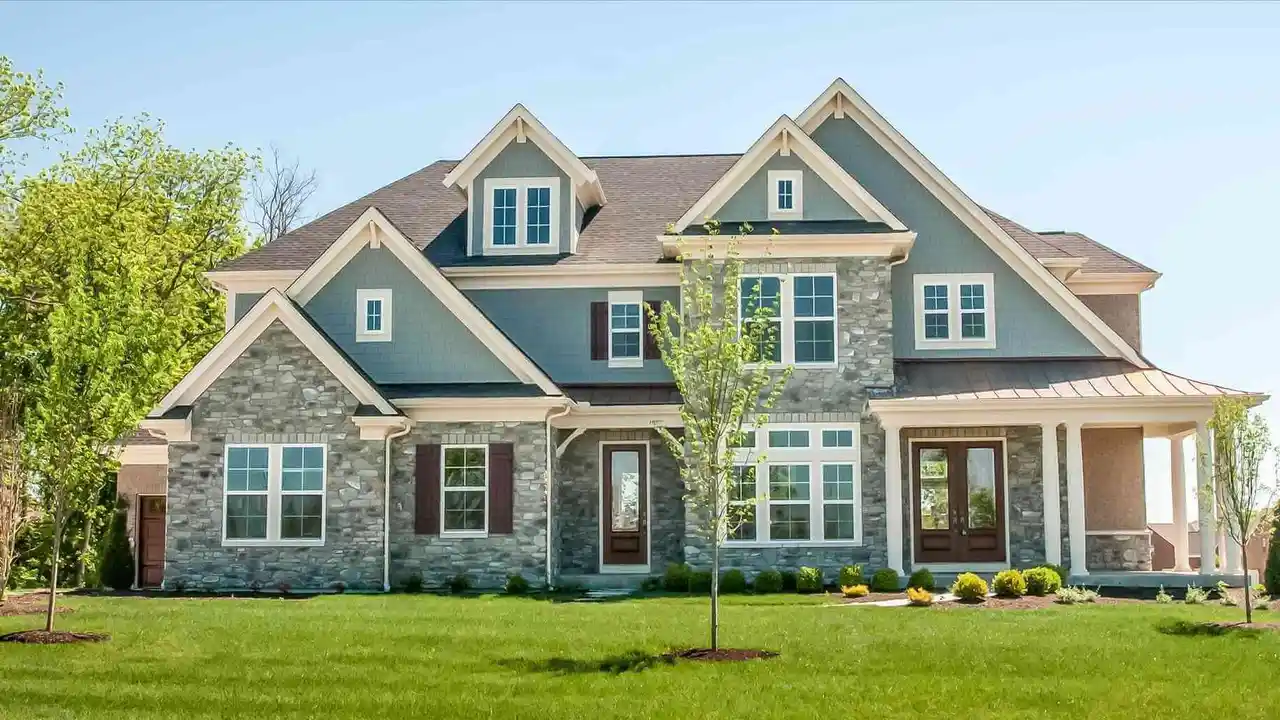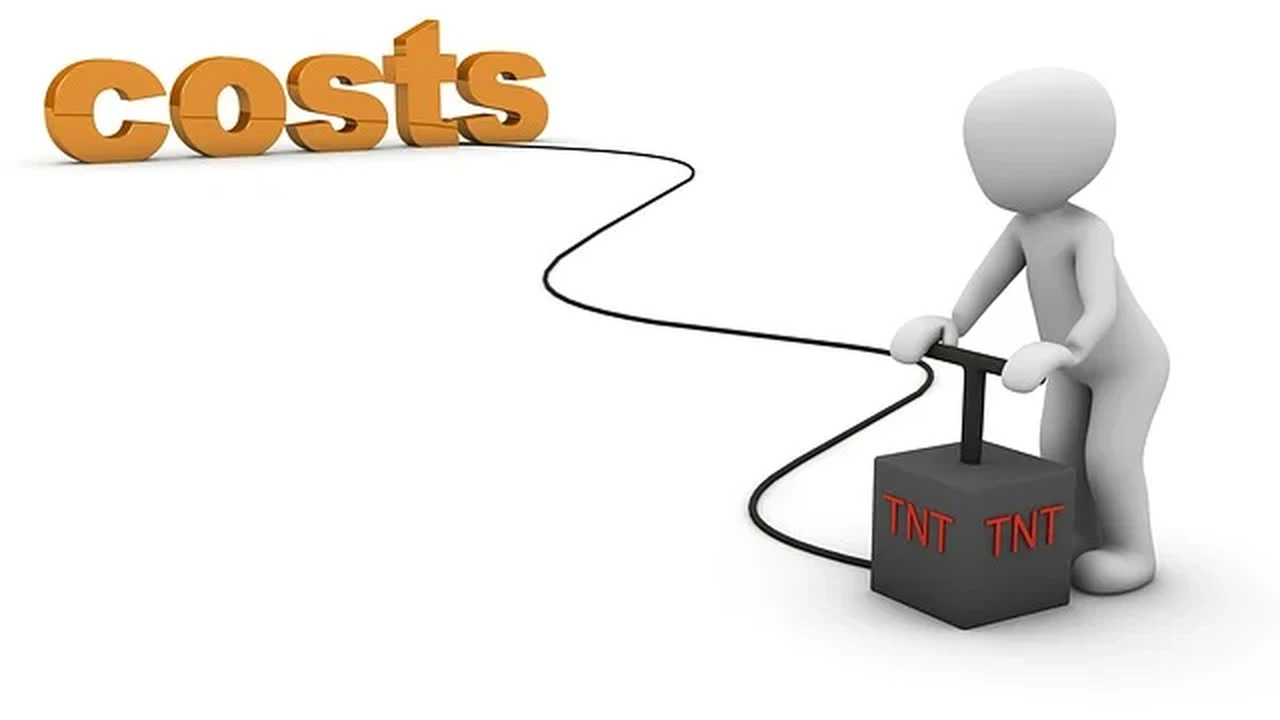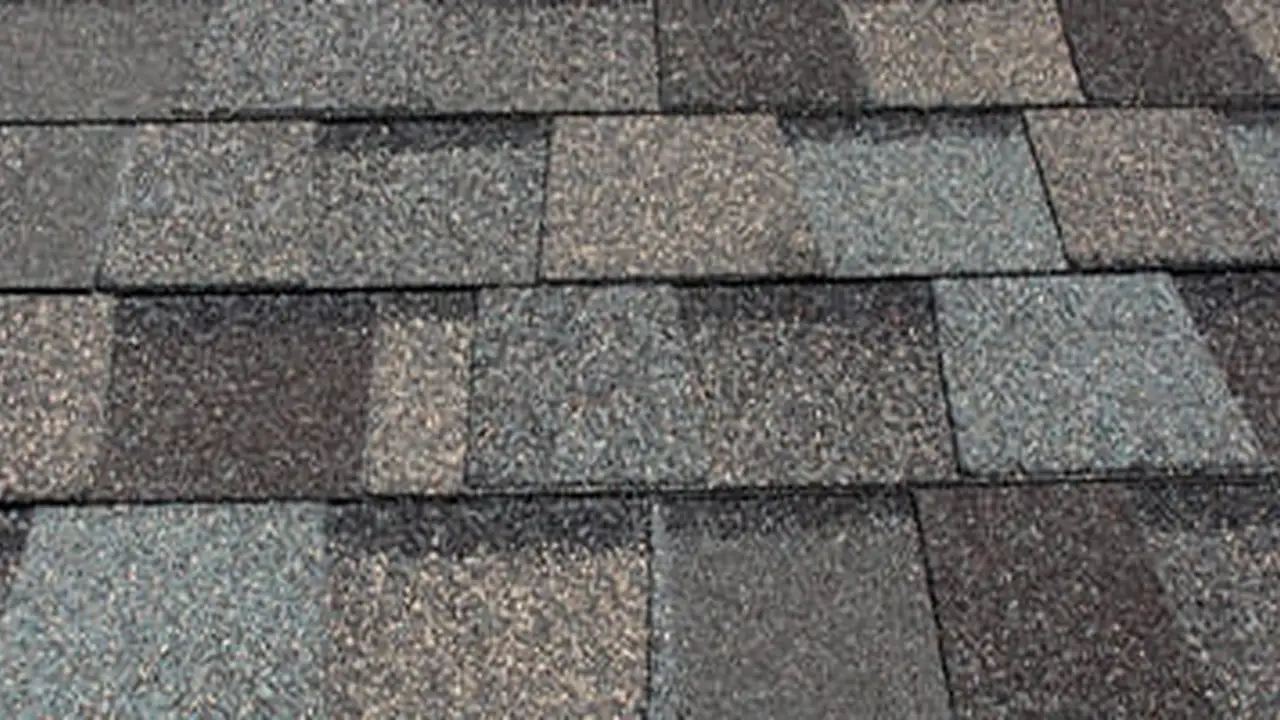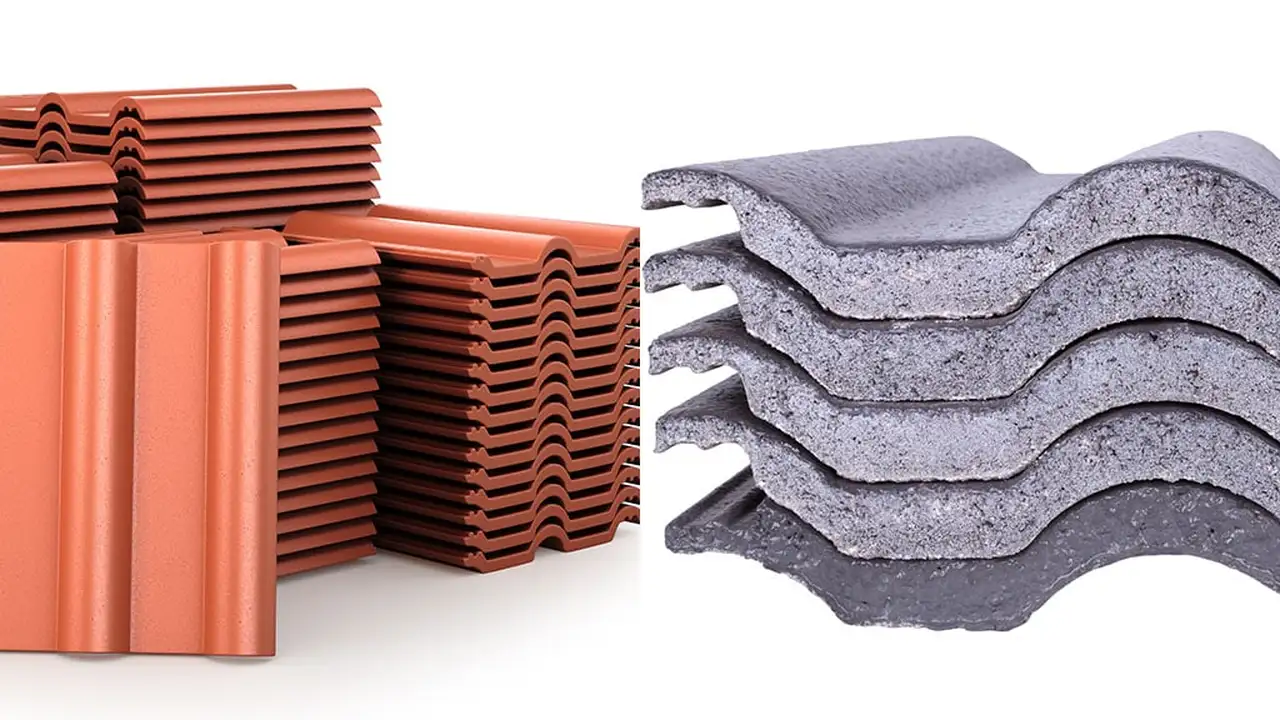Average Cost of a New Roof in the US
Get an overview of the average cost for a new roof installation in the United States, including factors affecting price.

Get an overview of the average cost for a new roof installation in the United States, including factors affecting price.
Average Cost of a New Roof in the US
So, you're thinking about getting a new roof, huh? That's a big decision, and let's be honest, one of the first things that comes to mind is probably, "How much is this going to set me back?" You're not alone. The cost of a new roof in the US can vary wildly, from a few thousand dollars to well over twenty thousand, depending on a whole host of factors. It's not as simple as just picking a material and getting a quote. There's a lot that goes into it, and understanding these elements can help you budget effectively and avoid any nasty surprises down the line.
We're going to break down everything you need to know about the average cost of a new roof in the United States. We'll look at the different types of roofing materials, how your home's size and complexity play a role, labor costs, and even geographic variations. Plus, we'll touch on some specific product recommendations, their typical use cases, and what you can expect to pay. Let's dive in!
Understanding the Core Factors Influencing New Roof Costs
Before we get into specific numbers, it's crucial to grasp the main drivers behind roofing expenses. Think of it like buying a car – a compact sedan costs less than a luxury SUV, and the features you add also impact the price. Roofing is similar.
Roofing Material Choices and Their Impact on Cost
This is arguably the biggest factor. Different materials have different price points, lifespans, and installation complexities. Here's a rundown of the most common options and their general cost ranges:
Asphalt Shingles The Most Popular and Affordable Roofing Material
Asphalt shingles are the reigning champions of residential roofing in the US, and for good reason. They're relatively inexpensive, easy to install, and come in a wide variety of colors and styles. You'll typically find two main types:
- 3-Tab Shingles: These are the most basic and cheapest option. They have a flat, uniform appearance and a shorter lifespan (around 15-20 years). Expect to pay roughly $3.00 to $5.00 per square foot installed.
- Architectural (Laminate) Shingles: These are thicker, more durable, and offer a more dimensional look, often mimicking wood shakes or slate. They have a longer lifespan (25-30 years or more) and better wind resistance. Costs typically range from $4.50 to $7.50 per square foot installed.
Specific Product Recommendations for Asphalt Shingles:
- GAF Timberline HDZ: This is a very popular architectural shingle known for its durability, wide color selection, and excellent warranty. It's a great all-around choice for most homeowners. Typical installed cost: $5.50 - $7.00 per square foot.
- Owens Corning Duration Series: Another top contender, offering similar benefits to GAF with a strong emphasis on wind resistance thanks to its SureNail Technology. Typical installed cost: $5.00 - $6.50 per square foot.
- CertainTeed Landmark: Known for its heavy-duty construction and wide array of color blends, providing a premium look and performance. Typical installed cost: $6.00 - $7.50 per square foot.
Use Case: Asphalt shingles are ideal for homeowners looking for a cost-effective, reliable, and aesthetically pleasing roofing solution for most residential properties. They are suitable for a wide range of climates.
Metal Roofing Durability and Energy Efficiency
Metal roofs have gained significant traction due to their exceptional durability, longevity (50+ years), and energy efficiency. While the upfront cost is higher than asphalt, their extended lifespan and potential energy savings can make them a smart long-term investment. There are several types of metal roofing:
- Standing Seam Metal: This is the most common and premium type, featuring raised seams that interlock, providing excellent weather protection and a sleek, modern look. Costs range from $8.00 to $15.00 per square foot installed.
- Corrugated Metal: A more economical option, often used for agricultural buildings or contemporary homes seeking an industrial aesthetic. Costs are typically $5.00 to $10.00 per square foot installed.
- Metal Shingles/Tiles: These are stamped to resemble traditional shingles, slate, or tile, offering the look of these materials with the benefits of metal. Costs are similar to standing seam, around $8.00 to $14.00 per square foot installed.
Specific Product Recommendations for Metal Roofing:
- Classic Metal Roofing Systems (Standing Seam): Known for their high-quality aluminum panels, extensive color options, and excellent warranties. They offer superior weather resistance. Typical installed cost: $10.00 - $15.00 per square foot.
- Sheffield Metals (Standing Seam): A leading manufacturer of metal coil and sheet, offering a variety of profiles and finishes for custom standing seam applications. Typical installed cost: $9.00 - $14.00 per square foot.
- Decra Metal Roofing (Stone Coated Steel): Offers the aesthetic of tile, shake, or shingle with the durability of steel, often with a stone chip coating for added texture and protection. Typical installed cost: $9.00 - $13.00 per square foot.
Use Case: Metal roofing is excellent for homeowners prioritizing longevity, low maintenance, energy efficiency, and superior protection against harsh weather. It's also a great choice for modern architectural styles or those seeking a unique aesthetic.
Tile Roofing Clay and Concrete for Mediterranean and Spanish Styles
Tile roofs, typically made from clay or concrete, are renowned for their beauty, extreme durability (50-100+ years), and fire resistance. They are heavy and require a robust roof structure to support them. They are particularly popular in warmer climates and for homes with Mediterranean, Spanish, or Southwestern architectural styles.
- Clay Tiles: Offer a classic, elegant look and come in various profiles, from barrel to flat. They are more expensive than concrete. Expect to pay $10.00 to $25.00 per square foot installed.
- Concrete Tiles: A more affordable alternative to clay, concrete tiles can mimic the look of clay, wood shakes, or slate. Costs typically range from $8.00 to $20.00 per square foot installed.
Specific Product Recommendations for Tile Roofing:
- Boral Roofing (Clay and Concrete): A major player offering a vast selection of clay and concrete tiles in various colors, profiles, and textures. Known for quality and aesthetic appeal. Typical installed cost: $12.00 - $22.00 per square foot.
- Eagle Roofing Products (Concrete): Specializes in concrete roof tiles, providing a durable and versatile option that can emulate many traditional roofing styles. Typical installed cost: $9.00 - $18.00 per square foot.
Use Case: Tile roofing is ideal for homeowners seeking a long-lasting, low-maintenance, and aesthetically distinctive roof, especially for homes in warm climates or those with specific architectural designs. The high upfront cost is offset by its incredible lifespan.
Slate Roofing The Pinnacle of Luxury and Longevity
Slate is often considered the most premium roofing material. It's natural stone, incredibly durable (100+ years), fireproof, and offers an unmatched aesthetic. However, it's also very heavy, requires specialized installation, and comes with a hefty price tag.
- Natural Slate: Costs typically range from $15.00 to $40.00+ per square foot installed, depending on the type of slate, color, and complexity of the roof.
Specific Product Recommendations for Slate Roofing:
- Vermont Structural Slate Company: A renowned supplier of high-quality natural slate from Vermont quarries, offering a range of colors and sizes. Typical installed cost: $20.00 - $40.00+ per square foot.
- Greenstone Slate: Another reputable source for natural slate, known for its consistent quality and variety of options. Typical installed cost: $18.00 - $35.00+ per square foot.
Use Case: Slate roofing is for homeowners who desire the absolute best in terms of longevity, aesthetics, and prestige, and are prepared for a significant investment. It's often chosen for historic homes or high-end custom builds.
Wood Shakes and Shingles Natural Beauty with Maintenance Needs
Wood shakes and shingles offer a rustic, natural look that many homeowners love. Shakes are hand-split and thicker, while shingles are sawn smooth. They typically last 20-30 years but require more maintenance than other materials, especially in damp climates, due to moss and rot concerns.
- Wood Shakes/Shingles: Expect to pay $7.00 to $15.00 per square foot installed.
Specific Product Recommendations for Wood Roofing:
- Waldun Cedar Shake & Shingle: A leading manufacturer of cedar shakes and shingles, known for their quality and sustainable sourcing. Typical installed cost: $8.00 - $14.00 per square foot.
Use Case: Wood roofing is suitable for homeowners who appreciate a natural, traditional aesthetic and are willing to commit to regular maintenance. It's often seen on craftsman-style homes or in wooded areas.
Synthetic Roofing Materials Modern Alternatives for Durability and Style
Synthetic or composite roofing materials are engineered to mimic the look of natural slate, wood shake, or tile, but with enhanced durability, lighter weight, and often better fire and impact resistance. They are typically made from recycled plastics and rubber.
- Synthetic Shingles: Costs generally range from $8.00 to $18.00 per square foot installed.
Specific Product Recommendations for Synthetic Roofing:
- DaVinci Roofscapes (Synthetic Slate/Shake): Offers highly realistic synthetic slate and shake tiles that are lightweight, durable, and come with excellent warranties. Typical installed cost: $10.00 - $18.00 per square foot.
- CeDUR (Synthetic Shake): Known for its realistic cedar shake appearance, made from a proprietary polyurethane material that is highly durable and fire-resistant. Typical installed cost: $12.00 - $18.00 per square foot.
Use Case: Synthetic roofing is perfect for homeowners who want the aesthetic of premium materials like slate or wood but desire lower maintenance, lighter weight, and superior performance against elements like hail and fire.
Roof Size and Complexity How They Affect Installation Costs
It's not just about the material; the characteristics of your roof itself play a huge role in the final price tag.
Square Footage The Basic Measurement for Roofing Projects
The larger your roof, the more material and labor it will require. Roofing contractors typically price by the 'square,' which is a 10x10 foot area, or 100 square feet. So, a 2,000 square foot roof is 20 squares. Always ask your contractor to clarify if their quote is per square foot or per square.
Roof Pitch and Steepness Safety and Labor Considerations
A steep roof (high pitch) is more challenging and dangerous to work on. This means more specialized equipment, safety precautions, and slower work, all of which translate to higher labor costs. A very low-slope roof might even require different materials (like TPO or EPDM) than a steep-pitched roof.
Roof Design and Features Valleys Dormers Chimneys
A simple, straightforward gable roof will be less expensive to re-roof than a complex roof with multiple valleys, dormers, skylights, chimneys, and intricate angles. Each of these features requires precise cutting, flashing, and sealing, adding to both material waste and labor time.
Labor Costs and Contractor Fees Understanding the Human Element
Labor is a significant portion of any roofing project. This includes the cost of tearing off the old roof, installing the new one, and cleaning up. Labor rates vary based on:
- Geographic Location: Labor costs are generally higher in urban areas and regions with a higher cost of living.
- Contractor Reputation and Experience: Highly experienced and reputable contractors might charge more, but they often provide superior workmanship and better warranties.
- Project Complexity: As mentioned, complex roofs require more skilled labor and time.
Expect labor to account for 40-60% of your total roofing cost.
Old Roof Removal and Disposal Essential but Often Overlooked Costs
Unless you're building a new home, your old roof needs to come off. This tear-off process involves labor, dumpster rental, and disposal fees. The cost can increase if there are multiple layers of old roofing material to remove. Some local regulations might limit the number of layers allowed, making a tear-off mandatory.
Underlayment Flashing and Other Essential Components
A new roof isn't just shingles or tiles. It includes several layers and components that are crucial for its performance and longevity:
- Underlayment: A protective layer installed over the roof deck before the main roofing material. Options include felt paper or synthetic underlayment. Synthetic is more durable and water-resistant but costs more.
- Flashing: Metal pieces installed around chimneys, skylights, vents, and valleys to prevent water penetration. Proper flashing is critical.
- Drip Edge: Metal flashing installed along the edges of the roof to direct water away from the fascia and prevent damage.
- Vents: Essential for proper attic ventilation, which helps regulate temperature and moisture, extending the life of your roof and improving energy efficiency.
- Ice and Water Shield: A self-adhering membrane applied to vulnerable areas (e.g., eaves, valleys) to provide extra protection against ice dams and water intrusion.
These components add to the overall material cost but are non-negotiable for a high-quality, long-lasting roof.
Geographic Variations in Roofing Costs Across the US
Where you live in the United States significantly impacts roofing costs. This is due to differences in labor rates, material availability, local building codes, and even climate-specific requirements.
Regional Price Differences East Coast vs West Coast vs Midwest
- Northeast and West Coast: Generally, these regions have higher labor costs and often stricter building codes, leading to higher overall roofing expenses. Major metropolitan areas like New York, Boston, San Francisco, and Los Angeles will see some of the highest prices.
- Southeast and Southwest: Costs can be moderate to high, influenced by climate (e.g., hurricane-resistant requirements in Florida) and population density.
- Midwest and South: Often have more competitive pricing due to lower labor costs and a less dense population.
Local Building Codes and Permits Understanding Regulations
Every city and county has its own building codes and permit requirements. These codes dictate everything from the type of materials allowed to the installation methods. Obtaining permits is a necessary step and adds a small cost to the project, but it ensures your roof meets safety standards and passes inspection. Ignoring permits can lead to fines and issues when selling your home.
Climate Specific Requirements Wind Hail and Snow Loads
If you live in an area prone to hurricanes, heavy snow, or frequent hail storms, your roof might need to meet specific requirements for wind uplift resistance, snow load capacity, or impact resistance. This can necessitate stronger materials, more robust fastening methods, and additional protective layers, all of which increase costs.
Average Total Cost Ranges for a New Roof in the US
Putting all these factors together, here's a general idea of what you might expect to pay for a new roof on an average-sized home (around 1,500-2,000 square feet) in the US:
- Asphalt Shingles: $7,500 - $15,000
- Metal Roofing: $12,000 - $25,000
- Tile Roofing (Clay/Concrete): $15,000 - $35,000
- Wood Shakes/Shingles: $10,500 - $22,500
- Synthetic Roofing: $12,000 - $27,000
- Slate Roofing: $22,500 - $60,000+
Remember, these are broad averages. Your specific project could fall outside these ranges depending on all the variables we've discussed.
Getting Accurate Roofing Quotes Tips for Homeowners
To get the most accurate estimate for your new roof, follow these steps:
Obtain Multiple Bids From Reputable Roofing Contractors
Always get at least three detailed quotes from different licensed and insured roofing contractors. This allows you to compare pricing, materials, warranties, and proposed work scopes. Don't just go with the cheapest bid; evaluate the overall value.
Ensure Detailed Itemized Quotes What to Look For
A good quote should be itemized and clearly state:
- The specific roofing material (brand, type, color).
- The scope of work (tear-off, number of layers, decking repair, etc.).
- All components included (underlayment, flashing, vents, drip edge, ice and water shield).
- Labor costs.
- Permit fees.
- Warranty information (material and labor).
- Payment schedule.
Ask About Warranties Material and Workmanship Guarantees
A new roof is a significant investment, so understanding the warranties is crucial. There are typically two types:
- Material Warranty: Provided by the manufacturer, covering defects in the roofing material itself.
- Workmanship Warranty: Provided by the contractor, covering issues related to the installation.
Look for contractors who offer strong workmanship warranties, ideally 5-10 years or more, as installation errors are a common cause of roof problems.
Check References and Reviews Due Diligence for Your Roofing Project
Before committing to a contractor, check their references, read online reviews (Google, Yelp, BBB), and verify their licensing and insurance. A reputable contractor will be happy to provide this information.
Potential Hidden Costs and How to Avoid Them in Roofing
While a good contractor will include most costs in their quote, some issues can arise during the project that might lead to additional expenses.
Unexpected Decking or Structural Repairs
Once the old roof is torn off, the roof deck (the plywood or OSB sheathing) might reveal rot, water damage, or structural issues that weren't visible before. These repairs are necessary and will add to the cost. A good contractor will inform you immediately and get your approval before proceeding.
Additional Layers of Old Roofing Material
If your roof has more than one layer of old shingles, the tear-off process will take longer and generate more waste, increasing labor and disposal fees.
Complex Flashing or Ventilation Issues
Sometimes, existing flashing might be inadequate or damaged, requiring more extensive replacement. Similarly, if your attic ventilation is poor, the contractor might recommend upgrades, which are beneficial but add to the cost.
Financing Your New Roof Exploring Payment Options
A new roof is a big expense, and many homeowners don't have the cash readily available. Fortunately, there are several financing options:
Home Equity Loans or Lines of Credit HELOC
If you have equity in your home, a home equity loan or HELOC can be a good option, often offering lower interest rates than personal loans.
Contractor Financing Programs
Many roofing companies partner with lenders to offer financing options, sometimes with promotional interest rates or deferred payments. Always read the terms carefully.
Personal Loans or Credit Cards
These are generally higher interest options but can be useful for smaller projects or if other financing isn't available.
Insurance Claims for Storm Damage
If your roof replacement is due to storm damage (hail, wind), your homeowner's insurance might cover a significant portion of the cost. Navigating insurance claims can be complex, so work closely with your contractor and insurance adjuster.
Is a New Roof a Good Investment Return on Investment ROI
Absolutely! A new roof is one of the best home improvement investments you can make. It offers:
- Increased Home Value: A new roof significantly boosts your home's curb appeal and resale value. Buyers are often willing to pay more for a home with a new, worry-free roof.
- Improved Energy Efficiency: Modern roofing materials and proper insulation/ventilation can lead to substantial savings on heating and cooling costs.
- Enhanced Protection: A sound roof protects your home's structure and interior from water damage, mold, and other issues.
- Peace of Mind: Knowing your home is protected by a reliable roof provides invaluable peace of mind.
While the average cost of a new roof in the US can seem daunting, understanding the factors involved, choosing the right materials, and working with a reputable contractor will ensure you get a durable, beautiful, and long-lasting roof that protects your home for decades to come. Don't hesitate to ask questions, compare quotes, and make an informed decision. Your home deserves it!
:max_bytes(150000):strip_icc()/277019-baked-pork-chops-with-cream-of-mushroom-soup-DDMFS-beauty-4x3-BG-7505-5762b731cf30447d9cbbbbbf387beafa.jpg)






